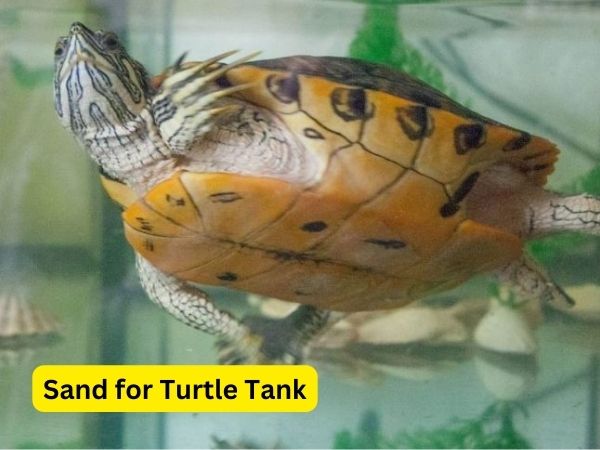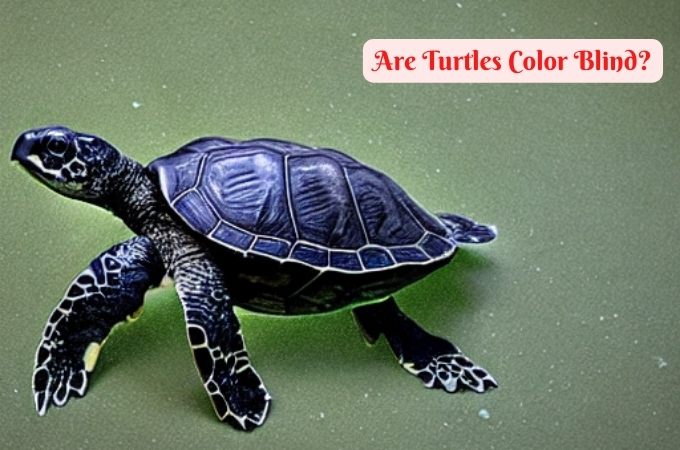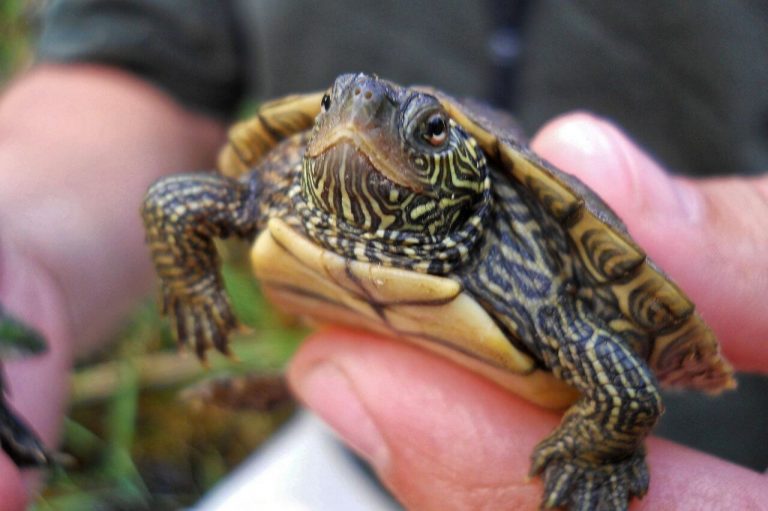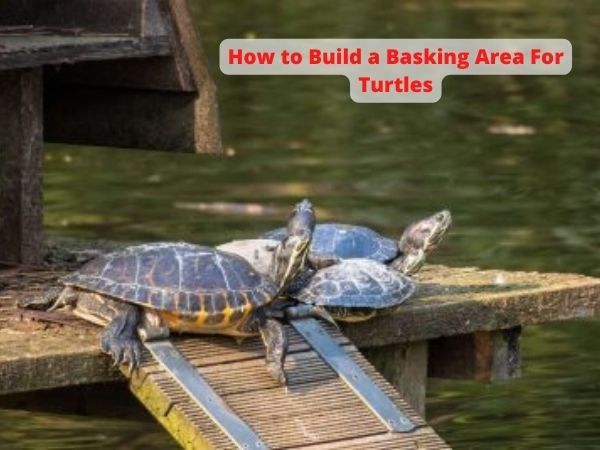Sand for Turtle Tank | Is it a Good Substrate for a Turtle Tank?
Turtles make very cool pets. They are easy to bond with. They won’t also pose any safety risks to your loved ones. Turtles are easy to feed. Their diet is manageable and you won’t have to spend so much on their upkeep.
But like humans, pets also need to be happy and turtles are no different. To keep your pet turtles happy, there are several things that you must do. Some of them include giving the turtles a safe home and keeping them clean.
However, one significant choice that you can make when designing a home for the turtles is to add a good substrate. One thing that many people don’t understand is what type of substrate to use.
Exo Terra Riverbed Sand, 10-Pound, Brown
In fact, one of the common concerns when it comes to substrates is whether to use sand for turtle tank.
[amazon box=”B001B599D2″ grid=”1″ price=”none”]
What is a Substrate?
A substrate is a substance that is used to line the bottom of a turtle’s tank. Substrates can also be used in an aquarium. Some of the best substrates that you can use for turtle tanks include the following:
- Gravel
- Caribsea
- Pebbles
- Flourite
Substrates are good for turtle tanks if the turtles love to live from it. They are also great if you want to plant live plants or any other thing with roots in it.
NOTE: Substrates can be used in turtle tanks. However, not all turtle species our substrates. In case you want to use substrates, you can do so for turtles that love to dig. These are turtles such as the soft-shell turtle.
Can You Use Sand for Turtle Tank?
Sand like gravel or pebble will work so well as a substrate for the turtle tank. I have used sand for a turtle tank for over five years and I have loved it. The sand substrate has so many advantages that you will love. They include the following.
Affordable
Unlike the other substrates that you might know, sand is affordable. You will spend very little and get a good amount of sand. This means that you can spread the sand over a long time without having to buy any substrate.
Clean A Turtle Tank With Sand
- Gather your supplies. You will need a bucket, a hose, and a turtle-safe cleaner
- Remove your turtle from the tank and place him in a safe area.
- Drain the water from the tank and remove all of the decorations.
- Clean the tank with the turtle-safe cleaner and rinse well.
- Fill the tank with fresh water and add the clean sand.
- Replace the decorations and add your turtle back to his home.
Easy to Clean
I have used many other substrates, but sand is the easiest to clean. I clean my sand substrate every two days and I find it easy. I use a 5-gallon bucket and a vinyl hose and it takes about 5 minutes and I am done. It is that simple.
Aesthetics
Like the huge tanks that you see in mega zoos that use sand or bare-bottom tanks, a sand substrate at home is that good too. It is fluid and looks very professional. It adds beauty and color to your turtle tank and will be wonderful to gaze at.
Top Reflection
Sand is the only substrate that reflects the light better. This makes it easy to take photos with your pet turtles. It also maximizes visibility for the turtles. They can see better and have a great time too. When you use sand as a substrate, you won’t see any shadows underneath your turtles too.
New Touch
If you are the on-fish guy, say the turtle guys, using sand doesn’t seem such a conventional idea at all. Instead, it seems like a new thing and will give you some nods. It is the best chance to brag.
Disadvantages of Sand Substrate
While sand makes for a better substrate, it is not entirely perfect. Sand also has a few disadvantages that you might encounter along the way. Some of the disadvantages that I have experienced with sand as a turtle substrate are these.
Bad for Filters
When you use sand in a turtle tank, you will realize that your filters will wear out faster. What this means is that you have to replace the filters often. This experience can be quite costly, especially for people with mega tanks.
Gets Dirty Easily
When it comes to using sand as a substrate, you must be prepared to wake up to a dirty tank. Sand leaves all the dirt to sit on top of it. This makes the tank look dirty easily. However, I find this to be lovely since I can easily clean the dirt out.
Shorter Lifespan
[amazon box=”B089T66D99″ grid=”1″ price=”none”]
LANDEN Aquarium Sand, Fine Grain Natural Color Sand for Freshwater
Sand has a shorter lifespan when used as a substrate. Compared to gravel or pebbles, sand has to be taken out every two weeks. Nonetheless, you can also do it when changing the water too. If you do that, you will make your work easy.
How to Clean Sand Substrate
Contrary to what many turtle keepers think, the sand substrate is easy to clean. To clean the sand substrate, you need to just get your PVC water hose pipe and just run the water through the sand. It is easy and you won’t get wet at all.
Additional Tips
Apart from what we have seen, here are some additional tips that you should keep in mind when using sand in a turtle tank.
Tip I
Sand like any other substrate when used in a turtle tank will only accumulate the uneaten food. It will also retain waste too. When this happens the turtle tank will get dirty quickly and give out a foul smell. However, with routine cleaning, you should be good to go.
Tip II
Not every type of turtle needs a substrate. The turtles that need substrates are the digging turtles such as the soft-shell turtle species. The other turtle species will require a bare bottom tank and still be happy.
Tip III
If you keep a box turtle, you should mix your sand with some soil. Box turtles don’t love fully-dry areas. A semi-moist area will also give them cool touch that minimizes dryness under the belly.
black sand vs white sand for turtle tank:
Some people say that black sand may be harder for turtles to see, which could make them more susceptible to predators, while others claim that the added minerals in black sand can help keep turtles healthy. Ultimately, it’s up to the pet owner to decide what they think is best based on their individual turtle’s needs.
sand filter for turtle tank:
Sand filters are used in turtle tanks to keep the water clean and clear. The filter traps debris and sediment in the sand, keeping the water clean and healthy for the turtles.
Frequently Asked Questions (Faqs):
Answer:
Play sand is fine to use in a turtle tank, but it’s important to make sure that it is washed and rinsed well before adding it to the tank. Sand can harbor bacteria and other organisms that can be harmful to your turtles, so it’s best to take the time to clean it thoroughly.
Answer: You’ll want to choose sand that is small enough so that your turtles won’t be able to eat it, but large enough so that it won’t get sucked up into the filters.
Next to consider is the color of the sand. You’ll want to choose sand that is dark in color, as this will help to camouflage your turtles and make them less visible to predators.
Eventually, you’ll want to make sure that the sand you choose is pH-neutral and does not contain any harmful chemicals or toxins.
Answer:
There are pros and cons to both sand and gravel in turtle tanks. Gravel is easier to clean, as it can be hosed down outside the tank. However, it can also be a place for bacteria to grow if not cleaned regularly. Sand is harder to clean, but doesn’t provide a place for bacteria to grow.
It also feels nicer on your hands when you are cleaning the tank. So overall, the choice between sand and gravel depends on your personal preference and how often you are willing to clean the tank.

Conclusion
From what we have seen, sand is an okay substrate for turtles. It is easy to clean and it will leave your turtles with easy digging time. Nonetheless, it requires routine cleaning to prevent any forms of bacterial buildup that might harm your turtle pals.


